
COVELLITE
Specimen cov-11
$ 48.00
Dims: 2.98x2.49x1.24" (7.58x6.32x3.14cm)
Wt: 8.32oz (233.3g)
Reynolds Tunnel, Summitville, Rio Grande County, Colorado, USA
This is a fine specimen of covellite, and potentially an extraordinary one. It consists of hundreds of thin blades of covellite, mostly buried within a mass of tuff (hardened white volcanic ash). The base of the specimen is a sulfide, either pyrite or more likely chalcopyrite, which quite possibly is a pseudomorph after covellite, since in places it shows the same mica-like habit. The sides of the specimen exposes the beautiful blue covellite crystals, partly to mostly coated with the brassy metallic sulfide. The broken tops of many covellite crystals are exposed on the tuff's surface. If it were possible to remove the tuff, you would undoubtedly find hundreds of beautiful covellite blades intergrown on the brassy sulfide base.

 Amethyst Galleries' Mineral Gallery MINERALS |

$ 375.00
Dims: 5" x 2-1/2" x 2"
Wt: 1 lb., 12 oz
Mapimi, Durango, Mexico
This is the largest Covellite specimen that I've ever seen. It is massive, both in size and in formation, and has the characteristic blue-black irridescent color and metallic luster. Running through the mass are a few veins of Calcite, and some semicrystalline masses of Pyrite linger around the edges. This is a spectacularly-colored piece with lots of contrast.

Mapimi, Durango, Mexico
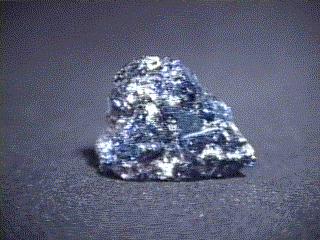
COVELLITE specimen cov-2
$ 56.00
$ 56.00
Dims: 1-7/8" x 1-1/4" x 1"
Wt: 2.21 oz
Montana, U.S.A.
Slightly larger than a thumbnail specimen, this chunk of Covellite has the characteristic dark blue coloration and metallic luster of the copper sulfide mineral. There are veins of pale pyrite and a small amount of an unidentifiable host rock.

cov-2 ($ 56.00)
Montana, U.S.A.
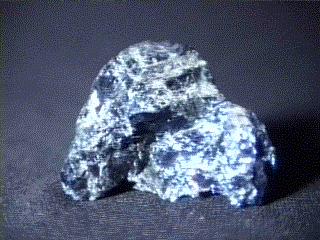
COVELLITE specimen cov-3
$ 56.00
$ 56.00
Dims: 2-1/8" x 1-3/4" x 3/4"
Wt: 2.65 oz
Montana, U.S.A.
A larger-than-thumbnail specimen, this piece of Covellite has a classic dark-blue color, metallic luster, flaky appearance, and high density. Like other specimens of its kind, there are veins of semicrystalline pyrite running through it. There is no matrix.

cov-3 ($ 56.00)
Montana, U.S.A.

COVELLITE specimen cov-4
$ 294.00
$ 294.00
Dims: 4.0" x 2.7" x 1.6"(10.2 x 6.9 x 4.1 cm)
Wt: 15.6 oz.(441 g)
Summitville Mine, Summitville, Colorado, U.S.A.
This specimen is the first one that I have seen of crystalline Covellite. Though the crystals are grown so that only one or two complete edges of each are visible and all are heavily intergrown, their edges and platy, micaceous form are obvious. The intergrowth makes it nearly impossible to define individual crystals, so measurement of their maximum dimensions cannot be done. However, there are some smaller crystals (0.2 - 0.5" or 0.5 - 1.3 cm) whose hexagonal form can be seen, though they are not complete. The crystals have a mostly dark gold color, though a violet color is present along many of the edges, a dull metallic luster, and are definitely opaque. A thin crust on the specimen's underside is a white-to-pale-green color and makes me think of malachite, but contains other material. Other than that, the specimen has no host rock and is attached to a rectangular, flat acrylic base with removable putty. It is a rather large specimen of an unusual material.

cov-4 ($294.00)
Summitville Mine, Summitville, Colorado, U.S.A.
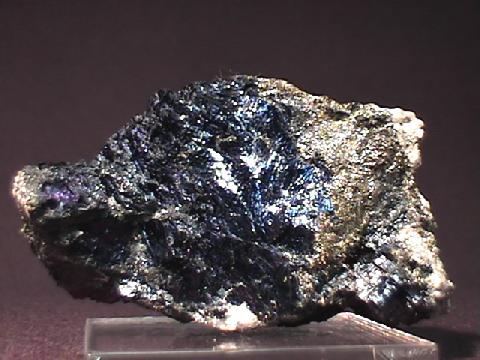
COVELLITE specimen cov-5
$ 75.00
$ 75.00
Dims: 2.3" x 1.6" x 1.0" (5.8 x 4.1 x 2.5 cm)
Wt: 5.41 oz. (153.6 g)
Leonard Mine, Butte, Montana, U.S.A.
This specimen shows the classic deep blue iridescent color and metallic luster of Covellite. Most of the specimen's mass is made up of Covellite, though there is a substantial and visible amount of pyrite present. The Covellite does not show any definite crystal form, though there are some definite directions of parting or cleavage. There is a thin layer of a quartz-based matrix rock covering a small area on the specimen's surface, and a small amount of the same material can be seen in one of the veins of pyrite. This piece has some intense blue coloration!

cov-5 ($ 75.00)
Leonard Mine, Butte, Montana, U.S.A.
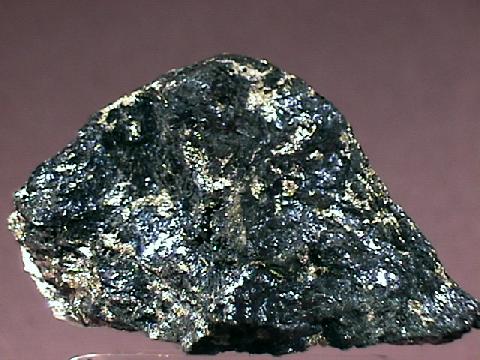
COVELLITE specimen cov-6
$ 85.00
$ 85.00
Dims: 2.8" x 1.7" x 1.5" (7.1 x 4.3 x 3.8 cm)
Wt: 5.69 oz. (161.4 g)
Leonard Mine, Butte, Montana, U.S.A.
This small hand specimen consists of a shapeless piece of Covellite. It does not show any crystalline form, so I cannot assess whether or not it is damaged. It has all of the hallmarks of Covellite: the deep blue iridescent coloration, the metallic luster, the relatively high density, and the associated pyrite inclusions. There is also a thin crust of a dull white material (either quartz or a feldspar) that is coating one of its faces.

cov-6 ($ 85.00)
Leonard Mine, Butte, Montana, U.S.A.
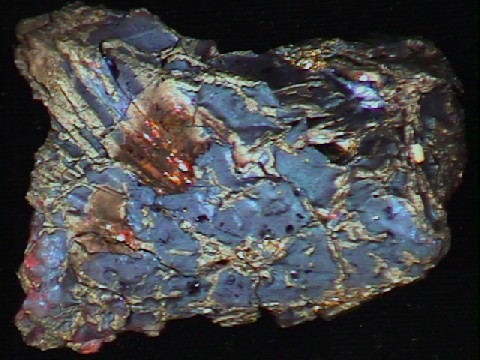
$ 135.00
Dims: 2.3x1.6x1.0" (5.9x4.0x2.6cm)
Wt: 2.07 oz. (58.7g)
Butte, Montana, USA
Generally, covellite specimens are massive, with distinctive cleavage and fracture providing the strongest indication of crystal structure. This specimen, however, is composed of books of covelite crystals, many of which appear to have natural (if imperfect) terminations. On one side of the specimen, the color is a pure covellite blue, while on the other side, about half of the surface has been tarnished to an irridescent purple. There is a scattering of tiny pyrite crystals lending sparkle to the specimen. The presence of distinctive covellite crystals makes this specimen special.
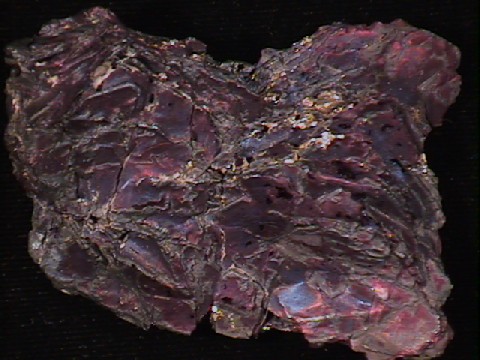

Butte, Montana, USA
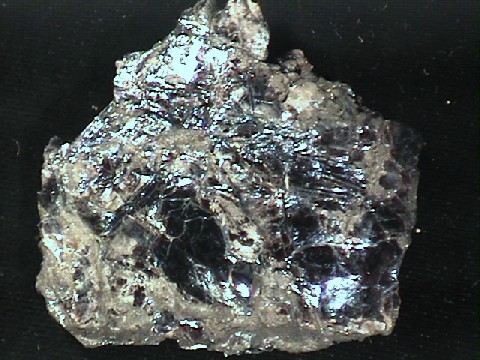
COVELLITE specimen cov-8
$ 90.00
$ 90.00
Dims: 1.73x1.69x0.63" (4.4x4.3x1.6cm)
Wt: 2.14oz. (60.7g)
Leonard Mine, Butte, Montana, USA
This is a dense stack of thin plates of covellite. The crystals show most of a hexagonal shape, and several "edges" of the specimen show dozens of plates of well-terminated crystals. The color is variously silver-gray, blue, and purple, typical of covellite. There is a coating of a dull gray mineral coating perhaps 30% of the surface (primarily on the bottom and sides), and I cannot identify it since it has extremely fine crystals, possibly acicular with a radiating habit, but really too small to be sure.
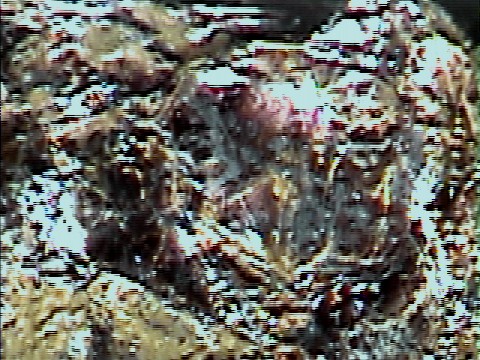

cov-8 ($ 90.00)
Leonard Mine, Butte, Montana, USA

COVELLITE specimen cov-9
$ 45.00
$ 45.00
Dims: 4.86x2.60x0.45" (12.34x6.61x1.15cm)
Wt: 6.26oz (177.1g)
Lubin, Poland
This slab of covellite is so dark as to appear nearly black. One side has been cut and polished flat, while the other is rough and is partially covered with a thin coating of a brown mineral which looks like rusty quartz. The polished side does have a few inclusions of white quartz, and generally shows a mixture of the blue covellite and brown translucent crystals.
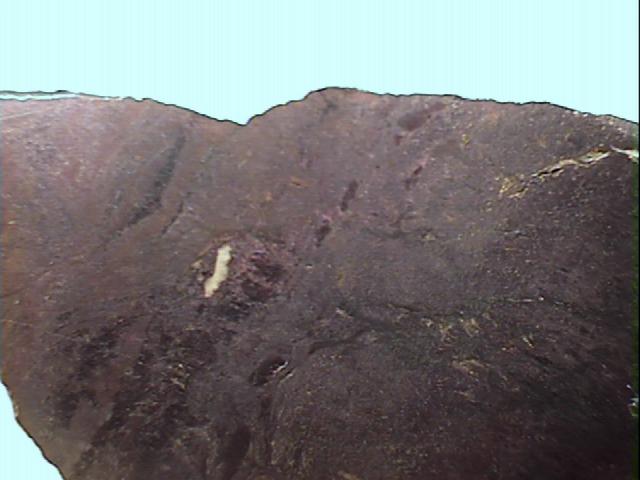

cov-9 ($ 45.00)
Lubin, Poland
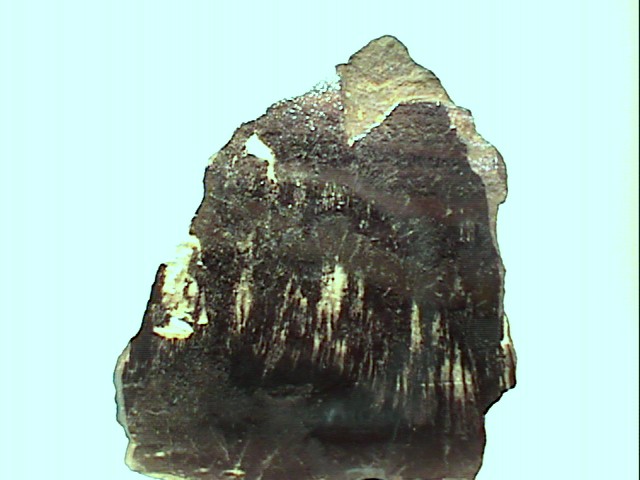
COVELLITE specimen cov-10
$ 30.00
$ 30.00
Dims: 3.35x2.53x0.55" (8.52x6.43x1.39cm)
Wt: 4.56oz (129.3g)
Lubin, Poland
While I am certain that this is mostly covelite, it is not as pure as the prettiest specimens. It is rough on one side, and cut and polished on the other. The polished side looks too black - the blue of covelite is only obvious at certain angles or lighting. On the rough side, the blue crystals of covelite are obvious, as well as the black mineral (which might just be impure covelite - the transistions are smooth), a white finely granular crystalline mineral whose crystals are too tiny to examine or identify, plus there are areas of a thin pretty green mineral, likely a weathering product of covelite.
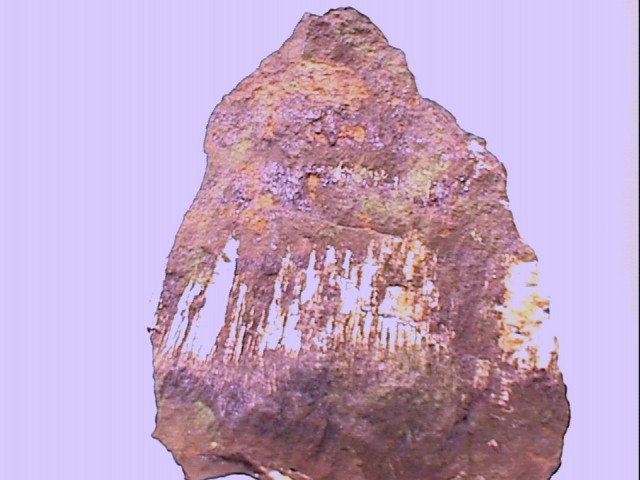

cov-10 ($ 30.00)
Lubin, Poland

COVELLITE specimen cov-11
$ 48.00
$ 48.00
Dims: 2.98x2.49x1.24" (7.58x6.32x3.14cm)
Wt: 8.32oz (233.3g)
Reynolds Tunnel, Summitville, Rio Grande County, Colorado, USA
This is a fine specimen of covellite, and potentially an extraordinary one. It consists of hundreds of thin blades of covellite, mostly buried within a mass of tuff (hardened white volcanic ash). The base of the specimen is a sulfide, either pyrite or more likely chalcopyrite, which quite possibly is a pseudomorph after covellite, since in places it shows the same mica-like habit. The sides of the specimen exposes the beautiful blue covellite crystals, partly to mostly coated with the brassy metallic sulfide. The broken tops of many covellite crystals are exposed on the tuff's surface. If it were possible to remove the tuff, you would undoubtedly find hundreds of beautiful covellite blades intergrown on the brassy sulfide base.


cov-11 ($ 48.00)
Reynolds Tunnel, Summitville, Rio Grande County, Colorado, USA